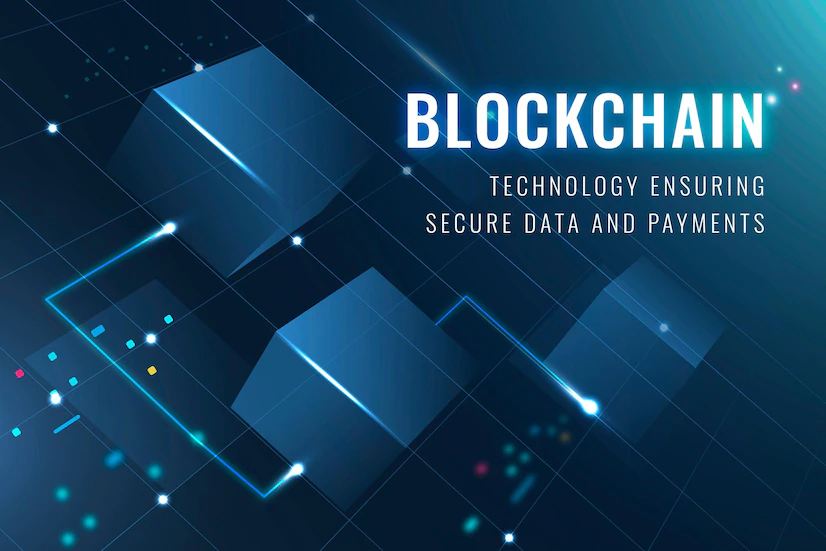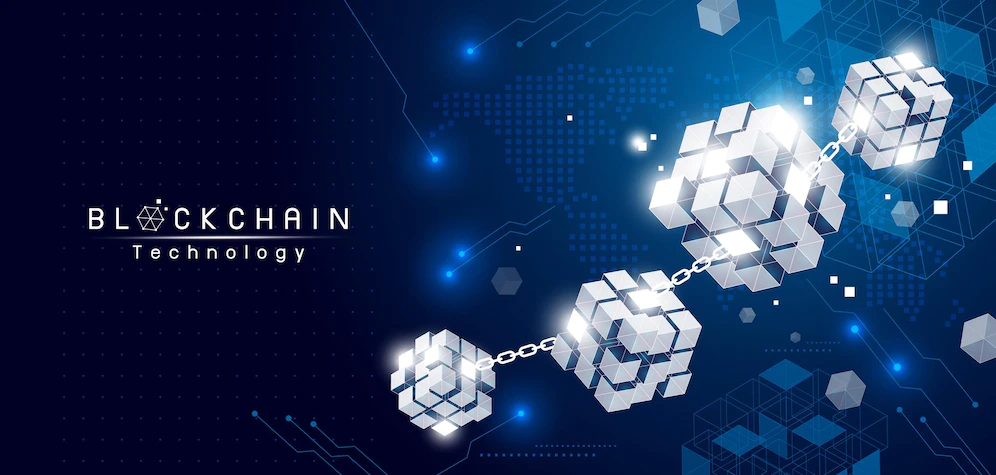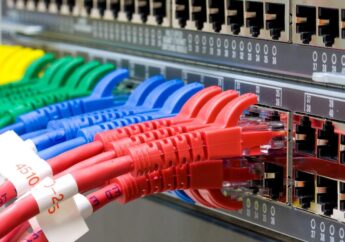Why And How Blockchain Technology Will Shape The Future Of The Internet
by Arnab Dey Technology Published on: 22 November 2022 Last Updated on: 04 March 2025

Over the years, many people have speculated and argued about the Internet’s future. With the proliferation of cutting-edge technology like virtual reality and immersive experiences.
The internet has become the de facto standard for communication and commerce throughout the world. The introduction of blockchain technology is a game-changer for the web.
True, but it’s not the first time the internet has undergone significant upheaval. Since its first public release almost 30 years ago, the internet has undergone two significant revisions and will almost certainly undergo a third.
The ways in which we utilize the Internet, our working environments, and our social relationships with people all over the world have all been influenced by these shifts, according to Coinwire.
Web 1.0 – The Unchanging Internet

The site predates the first public iteration of the internet. Having a website was mandatory for each company, and much of the material included on these sites was static, with just the most essential details highlighted.
Most of the blockchain technology content on the company website was promotional in nature. There was also a wealth of information to be found on news and reference websites. However, all of these sites were essentially one-way channels that pushed content at customers. Like the traditional news outlets (newspapers, magazines, radio, and t.v) of the day, this method was used to inform the public.
Many major companies using blockchain technology, whether it be a news network like NBC or CNN or a household name like McDonald’s, had a website that gave useful information to the general public.
The World Wide Web is seen in Figure 1. A company created and maintained the website as a separate legal entity. The majority of the information was static and in the organization’s care. The information was directed only toward the users of the website.
Data personalization was severely hampered by the architecture’s one-way information flow. Users could choose and sort the data they wanted to take in, but they usually weren’t able to influence the quality of the data that was made available to them.
There was almost little effect that users had on one another. Users could only talk to one another before via personal networks or small online forums. These were meant for a small, specific audience.
Web 2.0: Web-based application
Now that you’ve upgraded to the second generation of the internet, you’ve entered the age of web apps. Here, companies are concentrating on establishing a blockchain technology build forum where customers may talk amongst themselves about certain topics.
The proliferation of personal weblogs that began with the advent of Web 2.0 is largely responsible for the current state of the social media landscape.
When it comes to opening up access to data, social media platforms like Twitter and Facebook became early adopters. They created tools that enable anybody to post anything on any topic and reach a potentially massive audience.
As can be seen in Figure 2, the current iteration of the internet is dominated by companies like Facebook, which provide a platform for users to enter data into the software and share it privately with “friends” or publicly with anyone who may be interested.
Modern web applications facilitate communication between people who have never met before, regardless of their physical location.
Internet use skyrocketed with the widespread availability of cell phones. As a result, it’s possible that everyone will always be online now. They could talk to anybody they wanted, whenever they wanted, and from anywhere they wanted. The number of people using the Internet skyrocketed.
Users found they could communicate with people from all over the world, while developers of these tools found they could collect extensive data on their users’ habits and interests.
The biggest corporations on the internet were able to use this data to their advantage, both as a source of useful insights and a lucrative revenue stream. The founders of companies like Facebook are now among the world’s wealthiest people after the company’s meteoric rise to multibillionaire status.
Next, these organizations realized they had another skill set needed to fill: curation. Rather than showing the material to users at random, they may adjust what they see based on what others have liked or disliked in the past.
Online application blockchain technology companies established the “social algorithm” and used it to greatly affect the news that people across the world saw.
Because of their monopoly on knowledge, companies have gained enormous power, which some see as excessive.
Web 3.0: Valid information

There will soon be a third generation of the public internet.
No longer do third-generation blockchain technology web applications save information they’ve already gathered. Data and information are instead stored in the backbone of the Internet. In Web 3.0, data may be accessed by any program that has been given permission to utilize it.
An online service provider like Facebook may no longer claim ownership of the information collected by its applications. In actuality, web-based applications have far less impact on the whole process of data administration.
Because no one app can effectively play the role of information curator, no single social media firm can exercise monopoly-like control over the types of content that users are allowed to access.
The World Wide Web users take charge of and have full ownership of their data, which is then used and stored outside of the purview of any one entity. None of the web applications we use really produce any of the information they use.
That’s why information is taking precedence over even the most useful web tools. Instead, everything is recorded on a distributed ledger called a blockchain, which means it’s not controlled by any central authority. Due to the distributed nature of the blockchain, no one organization can monopolize its access to its data (company or government).
The goal is to provide easily-disseminated, accurate data that is unaffected by web applications and their inherent biases. You, the user, are the exclusive legal custodian of your data; cloud services and blockchain technology of their creators have no claim on it.
Because information will be properly cited and unfiltered, the Internet will become a more reliable source of information.
Web 3.0’s goal is to create a more decentralized internet power base than Web 2.0 web platform companies were able to accomplish.
The Benefits Of Blockchain
One technical breakthrough—blockchain—makes this transition to the 3rd generation of the internet conceivable. Blockchain technology is at the heart of this decentralized, information, authoritative internet. Isn’t there anything else that may have sparked this change? This shift will be possible due to many blockchain features:
The blockchain is a symbol of distributed ledger technology and the concept of distributed ownership. On a blockchain, data ownership can’t be determined by a single entity.
A blockchain is a distributed ledger that allows for distributed record-keeping and public data viewing. Distributing blocks on the blockchain is open to anybody who wants to do so.
– Information stored in a blockchain cannot be altered once it has been recorded; this, along with the fact that it has been cryptographically signed, lends credence to the idea that the information is legitimate and authoritative. There is complete transparency on the origin and source of all data, and its veracity can be independently verified. As a result, trust in the data is bolstered.
– Data stored on a blockchain cannot be curated, regulated, prioritized, or filtered by a central authority. The lack of a centralized data owner makes it impossible to regulate users’ actions with respect to the data. This suggests that the information being shared is not being managed or controlled by any central authority, such as a social media company.
Blockchain increases trust in data and its provenance by making every transaction public and data verifiable.
Similar to how IP transport infrastructure is not owned by a single entity, neither is the internet’s communications backbone. AT&T, Verizon, Telstra, and NTT Communications are just a few of the companies that help maintain the network’s backbone.
But no one entity can completely block, filter, or isolate Internet traffic. It is impossible for even powerful regimes like China and Russia to restrict their citizens’ access to certain parts of the internet.
The introduction of a new communication platform by an unfiltered provider renders all existing filters obsolete.
Similar to how the internet’s underlying infrastructure facilitated the spread of information, blockchain technology will do the same for digital assets. It will create a decentralized database that is available throughout the world and cannot be altered or deleted. Third-generation Internet advancements will be propelled by this quality.
This also explains why the blockchain is the technology of choice for the internet’s future.
What Blockchain Implies For Businesses?

Learn as much as you can about blockchain technology since this is the most important piece of advice. Blockchain technology is not the same as Bitcoin or any other digital currency.
Although Bitcoin relies on the blockchain, the blockchain itself is not Bitcoin. Blockchain’s original use case in digital money is only one example of its broad applicability.
The next thing to keep in mind is that blockchain is more than just a technology; it’s a whole new approach to thinking about data that will form the foundation of the next generation of the internet. Its importance to information storage and transfer is comparable to that of the Internet’s underlying infrastructure.
Conclusion:
Always keep blockchain technology in consideration when you plan out the next iteration of your app’s user experience. To the next gen of internet applications, blockchain will be what about the public cloud, cloud microservice architectures, and DevOps is to this one.
Make sure that all of your present and future software design methods take into consideration the effects of blockchain.
Read Also:



































































































